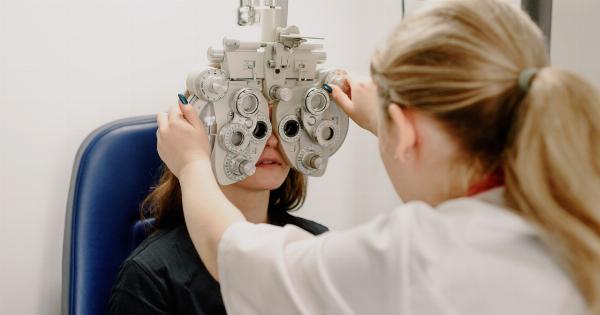Cardiovascular disease (CVD) refers to a class of diseases that involve the heart and blood vessels. It is a leading cause of mortality worldwide, claiming millions of lives each year.
While traditional risk factors for CVD such as high blood pressure, smoking, and high cholesterol are well-known, recent research has suggested a surprising link between certain infections and the development of cardiovascular complications. In this article, we will explore some of the infections that can potentially lead to CVD and discuss preventive measures to reduce the risk.
1. Chlamydia Pneumoniae
Chlamydia pneumoniae is a type of bacteria that can cause respiratory infections such as bronchitis and pneumonia.
However, studies have shown that this bacterium can also invade the cells lining blood vessels, leading to the development and progression of atherosclerosis. Atherosclerosis is a condition characterized by the buildup of plaque inside the arteries, narrowing them and increasing the risk of heart attacks and strokes.
2. Helicobacter Pylori
Helicobacter pylori is a common bacterium that infects the stomach lining and causes gastritis and peptic ulcers. Recent studies have linked this infection to the development of atherosclerosis and an increased risk of cardiovascular events.
It is believed that the chronic inflammation caused by H. pylori accelerates the progression of atherosclerosis, contributing to the development of CVD.
3. Influenza Virus
Influenza, or the flu, is a viral respiratory infection that affects millions of people globally each year.
While the primary complications of influenza are typically associated with the respiratory system, several studies have demonstrated that influenza infection can also trigger cardiovascular events such as heart attacks. The exact mechanisms behind this association are not fully understood, but it is thought that the body’s inflammatory response to the virus plays a role.
4. Cytomegalovirus (CMV)
Cytomegalovirus (CMV) is a common virus that usually causes mild symptoms in healthy individuals.
However, in people with weakened immune systems, such as those with HIV/AIDS or organ transplant recipients, CMV can cause severe complications, including cardiovascular disease. CMV infection has been linked to various cardiovascular disorders, including coronary artery disease and accelerated progression of atherosclerosis.
5. Human Immunodeficiency Virus (HIV)
Human Immunodeficiency Virus (HIV) is a virus that weakens the immune system and leads to acquired immunodeficiency syndrome (AIDS).
In addition to its well-known effects on the immune system, HIV infection is associated with an increased risk of cardiovascular disease. The chronic inflammation, immune dysfunction, and metabolic changes caused by HIV contribute to the development of CVD in HIV-positive individuals.
6. Periodontal Disease
Periodontal disease, commonly known as gum disease, is an infection of the tissues surrounding the teeth. Poor oral hygiene, plaque buildup, and bacterial infections contribute to the development of periodontal disease.
Research has established a correlation between periodontal disease and an increased risk of CVD. The theory is that the bacteria causing gum disease can enter the bloodstream, triggering inflammation and ultimately contributing to the development of cardiovascular complications.
7. Hepatitis C Virus (HCV)
Hepatitis C virus (HCV) is a bloodborne virus that primarily infects the liver. However, chronic HCV infection has been associated with higher rates of cardiovascular events, including heart attacks and strokes.
The exact mechanisms linking HCV to CVD are still being studied, but it is believed that chronic inflammation, immune system dysregulation, and atherosclerosis are contributing factors.
8. Tuberculosis (TB)
Tuberculosis (TB) is a bacterial infection that primarily affects the lungs. However, studies have found a connection between TB infection and an increased risk of cardiovascular disease.
The chronic inflammation and immune response triggered by TB infection can promote the development of atherosclerosis and increase the likelihood of CVD complications.
9. Streptococcus Pneumoniae
Streptococcus pneumoniae is a common bacterium known to cause respiratory infections such as pneumonia and meningitis. Recent research has indicated a potential link between S. pneumoniae infection and an increased risk of cardiovascular events.
The mechanism behind this association is thought to involve the activation of platelets, leading to the formation of blood clots and subsequent cardiovascular complications.
10. Urinary Tract Infections (UTIs)
Urinary tract infections (UTIs) are bacterial infections that occur in the urinary system, including the bladder and kidneys.
While UTIs are typically not associated with cardiovascular complications, a large population study found that women who experience recurrent UTIs have a higher risk of developing cardiovascular disease. The exact reasons for this association are not yet fully understood and require further investigation.
Prevention and Conclusion
Although the precise mechanisms linking infections to cardiovascular disease are not fully understood, it is clear that certain infections can contribute to the development and progression of CVD.
To reduce the risk of complications, it is crucial to maintain good overall health and take preventive measures. This includes practicing good hygiene, getting vaccinated against influenza and other relevant infections, seeking prompt treatment for infections, and managing chronic infections effectively.
Additionally, managing traditional risk factors for cardiovascular disease, such as maintaining a healthy diet, engaging in regular physical activity, quitting smoking, and controlling blood pressure and cholesterol levels, can also help mitigate the impact of infections on CVD risk.
By understanding the potential connections between infections and cardiovascular disease and taking appropriate preventive measures, it is possible to reduce the burden of CVD and its associated complications.





























